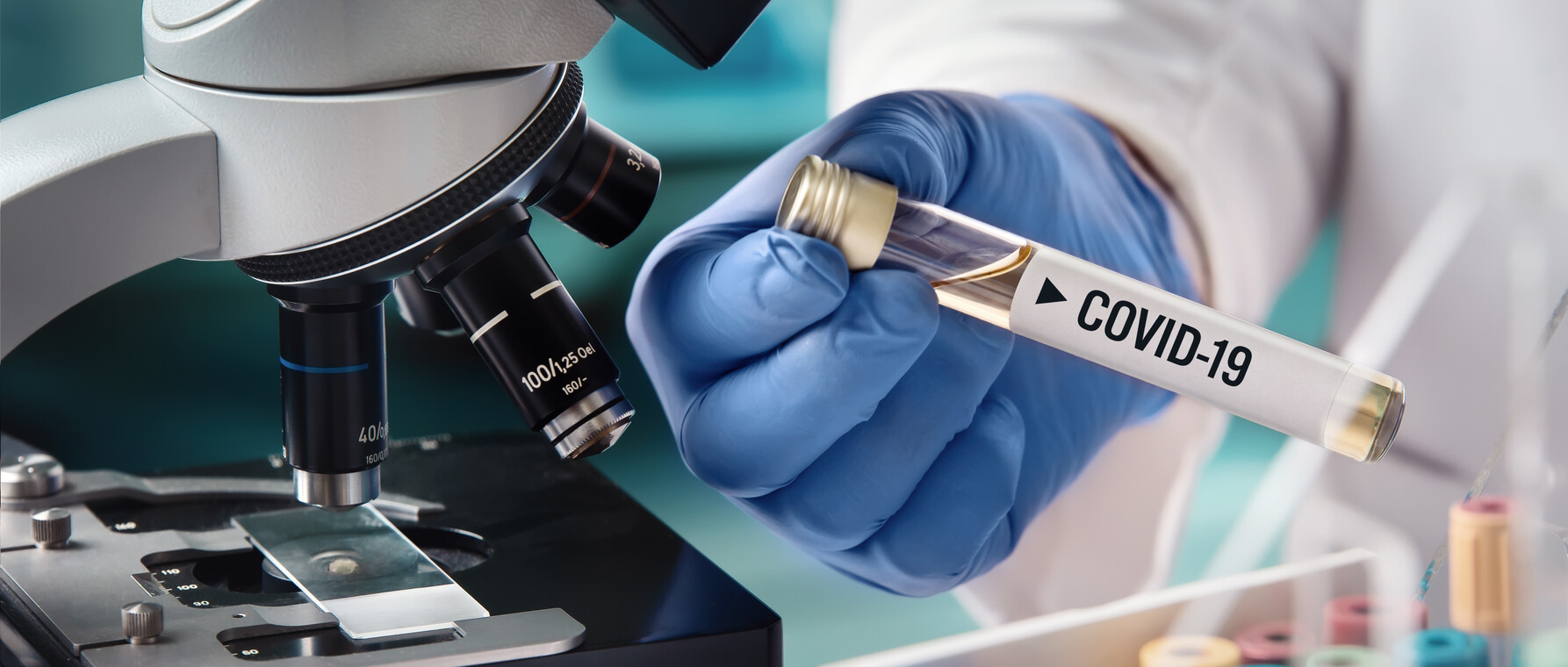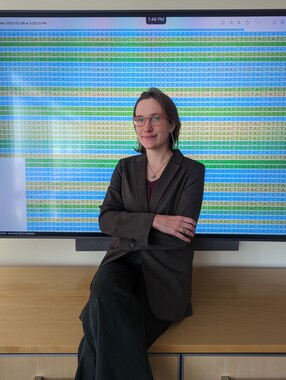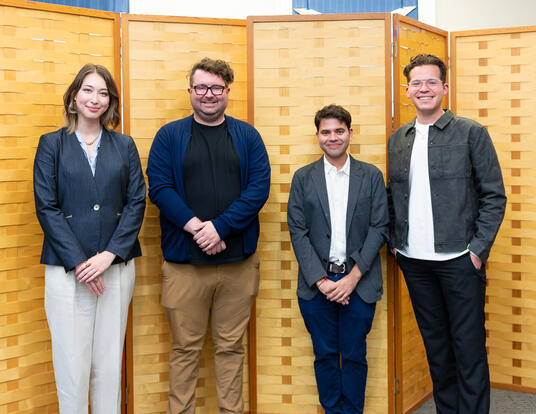A Mission to Prevent Transmission
Using genomics and algorithms to respond more effectively to SARS-CoV-2

Research at Risk: Since World War II, universities have worked with the federal government to create an innovation ecosystem that has yielded life-changing progress. Now much of that work may be halted as funding is withdrawn. Find out more about the threats to medical, engineering, and scientific research, as well as how Harvard is fighting to preserve this work—and the University's core values.
Starting July 4, 2021, and lasting past the holiday, members of the LGBTQ community converged on Provincetown, Massachusetts, for a holiday that was supposed to be a celebration of the end of the long COVID-19 lockdown. When the weather turned rainy, they confidently took the party indoors, packing the little seaside town’s restaurants, bars, and clubs. Why not? They were vaccinated and mask mandates had been lifted.

What happened next shocked both the revelers and the country, shutting down what had been hyped as a “hot vax summer,” and signaling that there was a long way to go before the pandemic was over.
“The combination of the lack of masking and the packed indoor venues resulted in a large COVID outbreak,” says Lydia Krasilnikova, a PhD student in organismic and evolutionary biology at Harvard’s Graduate School of Arts and Sciences (GSAS). “Over 1,000 people contracted the virus and 74 percent of those who got sick had been vaccinated. Like many of us, they were trying to celebrate what we thought would be the end of the pandemic. Of course, it wasn’t.”
A 2023 Harvard Horizons Scholar, Krasilnikova co-led an 80-person, multi-organization collaboration examining the July 2021 superspreader event in Provincetown. The outbreak contributed to the US Center for Disease Control’s decision to resume its recommendation of indoor masking later that year. Her Horizons project, "Tracing COVID-19 Outbreaks to Learn about the Effect of Vaccination and Boosting on Risk of Infection and Transmission," showcases this work, examining how risk of infection and onward transmission change with vaccination status to help public health officials respond to the ongoing threat of SARS-CoV-2.
Reconstructing a Sequence of Events
The Massachusetts Department of Public Health (DPH) reached out to the Broad Institute laboratory of Krasilnikova’s dissertation advisor, Professor Pardis Sabeti, soon after the outbreak in Provincetown. Krasilnikova, a member of the Sabeti Lab, had worked with the DPH previously to reconstruct and learn from other outbreaks before the COVID pandemic hit. The state sent test samples from Provincetown to Broad where they were sequenced by the institute’s genomics platform.
By reading the genetic code—composed of the RNA base nucleotides adenine, uracil, cytosine, and guanine (AUCG)—from overlapping snippets of the virus, and lining them up against a reference, the Broad genomics team reconstructed the full genome of each sample. Using that data, the Sabeti Lab scientists were able to identify potential transmission links in one of two ways.
The simplest case was when the COVID genome transmitted by one person was identical to the one that showed up in another. (The genome could also have been more or less identical with small changes—say, a location with a different base nucleotide in one person's sequence than in another's.) Alternatively, maybe the genomes weren’t identical but the version that showed up in one person had a low-frequency mutation that appeared in the test sample of another—like a printing press that left a small imperfection in the pages that rolled through it.
“SARS-CoV-2 mutates when it’s transmitted to from person to person,” Krasilnikova says. “Using a process called genomic epidemiology, we were able to use those mutations to track who infected whom—at least potentially.”
Even with the genetic data, though, it can still be a challenge to trace transmission of the virus. “You could have a situation where one person infected another who we might not have sampled, and then that person transmits to a third person we did sample,” Krasilnikova says. “Or it could be that there was another person that we didn't sample and they infected two other people. In each case, COVID in any two of the three people could have the same genome but not because the virus was transmitted directly between them.”
SARS-CoV-2 mutates when it’s transmitted to from person to person. Using a process called genomic epidemiology, we were able to use those mutations to track who infected whom—at least potentially.
–Lydia Krasilnikova
A Natural Experiment
The outbreak in Provincetown, however, was a discrete event among a discrete population at a particular time. Krasilnikova says that the state’s Community Tracing Collaborative worked with local officials and those affected to do “an absolutely fantastic job” of identifying contacts and people who could potentially be infected with the virus.
“In addition to genomic data, we used information about when the samples were collected as well as the symptom onset date provided by the Department of Public Health,” she says. “Thanks to the contact tracing effort on the ground, we were able to identify transmission events with high confidence. The dream is to have this information in true real time, but this is certainly the closest we've ever gotten. In the future, this process could extend the range and impact of contact tracing efforts.”
The people who flocked to Provincetown in the summer of 2021 weren’t alone in believing that the vaccine would protect them from contracting and transmitting SARS-CoV-2. Masking and other measures to mitigate the impact of the pandemic had been relaxed across the country as people were inoculated. The truth was, though, that no one really knew what the impact of the vaccine would be. Although over a thousand people got sick, Krasilnikova says that the Provincetown outbreak probably saved lives in the long run by conducting a kind of “natural experiment” that informed public health policy as the virus surged again.
“We were able to show that the virus could be transmitted between individuals even when both were vaccinated,” she says. “Then it could be transmitted again to another vaccinated individual. This was the biggest finding of our study and it was possible only because the Department of Public Health worked together with us [and] provided information on the vaccination status of those who were infected.”
Making the Impossible Possible
Sabeti says that her advisee’s research helped change public health policy on the national level. “Lydia helped uncover both epidemiological and genomic evidence of transmission from and between vaccinated individuals,” she says. “This project, the results of which were published in the magazine Cell, was a tour de force.”
Today, Krasilnikova is co-leading Sabeti Lab’s biggest COVID-19 paper yet, on track for publication this winter, analyzing 50,000 genomes alongside epidemiological data. To conduct research at that scale, she uses computer science algorithms and concepts to speed up analysis. “Because our COVID work uses tens of thousands of SARS-CoV-2 samples, Lydia's algorithms have enabled us to execute some analyses that otherwise would not have been possible,” Sabeti says, noting that Krasilnikova has been able to infer transmission events from samples derived from tens of thousands of individuals. “It allowed Lydia to compare transmission rates from unvaccinated, vaccinated, and boosted individuals. Her innovative work on relative risks of infection and transmission have formed the cornerstone of our project.”
Lydia helped uncover both epidemiological and genomic evidence of transmission from and between vaccinated individuals. This project . . . was a tour de force.
–Professor Pardis Sabeti
With tens of thousands of new cases and hundreds of deaths each day, Krasilnikova says that the pandemic is still with us—despite the fact that the Biden Administration in January ended the COVID-19 public health emergency. She hopes that her research will inspire more work to improve COVID response efforts and make genomics a standard part of contact tracing.
“COVID can be transmitted just by standing in the same enclosed space—an elevator, a bathroom—as someone who was there 20 minutes earlier,” she says. “An outbreak can occur in many different places among people who’ve never even met. We had a lot more ability to detect transmission events by analyzing genomes than we would have had to through standard contact tracing alone. It made the impossible possible.”
Portrait courtesy Lydia Krasilnikova; Banner courtesy Shutterstock
The 2023 Harvard Horizons Symposium will take place on Tuesday, April 11, 2023 at 5:00 p.m. in Sanders Theatre.
Get the Latest Updates
Join Our Newsletter
Subscribe to Colloquy Podcast
Simplecast





